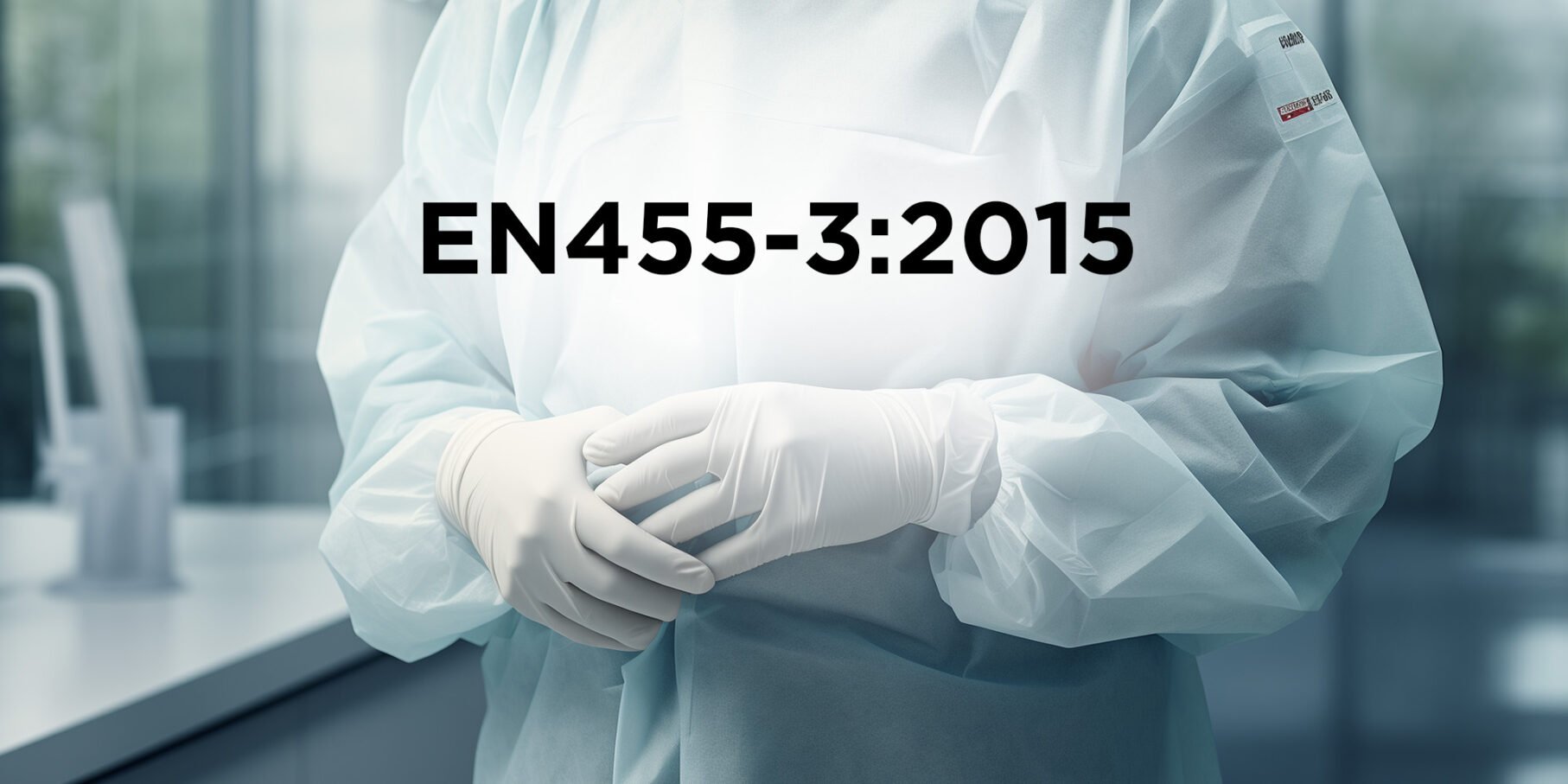
The EN455-3:2015 is an essential health and safety standard for medical gloves for single use, primarily focusing on the requirements and testing for biological evaluation. This guide will provide a simplified understanding of the EN455-3:2015 standard, its key components, and its implications for the medical industry. You will gain insights into the various tests conducted under this standard, the critical normative references that guide these tests, and the importance of adhering to these standards for ensuring safety, precision, and quality in medical gloves. If you are looking for an even shorter and less detailed introduction to all 4 chapters of the EN455-standard, we recommend that you look at our introduction to the EN455-standard.
EN455-3:2015: An Overview
The EN455-3:2015 is a part of the EN455 series of standards, which outline the requirements and testing procedures for single-use medical gloves. Specifically, the EN455-3:2015 standard pertains to the requirements and testing for biological evaluation, ensuring the gloves are safe and free from biological contaminants that might cause adverse health reactions.
The Purpose of EN455-3:2015
The primary aim of the EN455-3:2015 standard is to establish safety and quality measures for medical gloves. The standard ensures that gloves are evaluated for biological safety, which includes testing for protein content, endotoxins, and chemicals. This critical process ensures that gloves are safe for users, reducing the potential for allergic reactions and other health issues.
Understanding the Requirements of EN455-3:2015
The EN455-3:2015 standard sets out several critical requirements for the biological evaluation of medical gloves. These include:
General Requirements
Medical gloves should be evaluated in line with EN ISO 10993-1:2009, which details the general principles for the biological evaluation of medical devices. A risk management process should be established according to EN ISO 14971:2012.
Chemicals
The EN455-3 standard dictates that the gloves should not contain talcum powder (magnesium silicate), and the manufacturers should disclose a list of chemical ingredients used during manufacturing, which may cause adverse health effects.
Endotoxins
Endotoxin content should be monitored in sterile gloves and should not exceed the limit of 20 endotoxin units per pair of gloves.
Powder-free Gloves
Powder-free gloves should not contain more than 2 mg of powder residues per glove.
Proteins, Leachable
The manufacturer should monitor the leachable protein level in the finished gloves, ensuring that the level is minimized.
Labelling
Labelling should comply with EN 1041:2008+A1:2013 and EN ISO 15223-1:2012. Gloves containing natural rubber latex should be labelled accordingly.
Normative References
The EN455-3:2015 standard includes several normative references that guide its application:
- EN455-4:2009 – Specifies the shelf life determination of single-use medical gloves.
- EN1041:2008+A1:2013 – Addresses the information provided by the manufacturer of medical devices.
- EN ISO 15223-1:2012 – Highlights the symbols to be used with medical device labels, labeling, and information to be supplied.
- ISO 188:2007 – Sets the standards for accelerated aging and heat resistance tests of rubber, vulcanized, or thermoplastic.
- ISO 23529:2010 – Outlines general procedures for preparing and conditioning test pieces for physical test methods.
Testing Methods under EN455-3:2015
The EN455-3:2015 standard prescribes a series of tests for evaluating the biological safety of medical gloves. These tests include:
Endotoxins Testing
Endotoxin testing is performed using the Limulus Amoebocyte Lysate (LAL) procedures. The results are expressed in endotoxin units (E.U.) per pair of gloves.
Powder Residues Testing
The test method for determining powder residues is described in EN ISO 21171:2006. Powder-free gloves should not exceed 2 mg of powder residues per glove.
Proteins, Leachable Testing
The leachable protein level is monitored using the modified Lowry method. This method measures a broad approximation for the allergen content.
Conclusion
The EN455-3:2015 standard is a critical part of ensuring the safety, precision, and quality of medical gloves. By adhering to this standard, manufacturers can reduce the risk of adverse health reactions caused by the use of their gloves. As such, understanding and complying with the EN455-3:2015 standard is crucial for any manufacturer or distributor of single-use medical gloves.
Additional Information
In addition to the general requirements and testing procedures, the EN455-3:2015 standard also provides guidelines on the appropriate labeling of medical gloves. This includes the requirement for gloves containing natural rubber latex to be labeled with the EN ISO 15223-1:2012 symbol for latex. The labeling should also include a prominent indication of whether the glove is powdered or powder-free.
After all, ensuring the safety and quality of medical gloves is not just about adhering to industry norms—it’s about safeguarding the health and well-being of medical professionals and patients alike.
